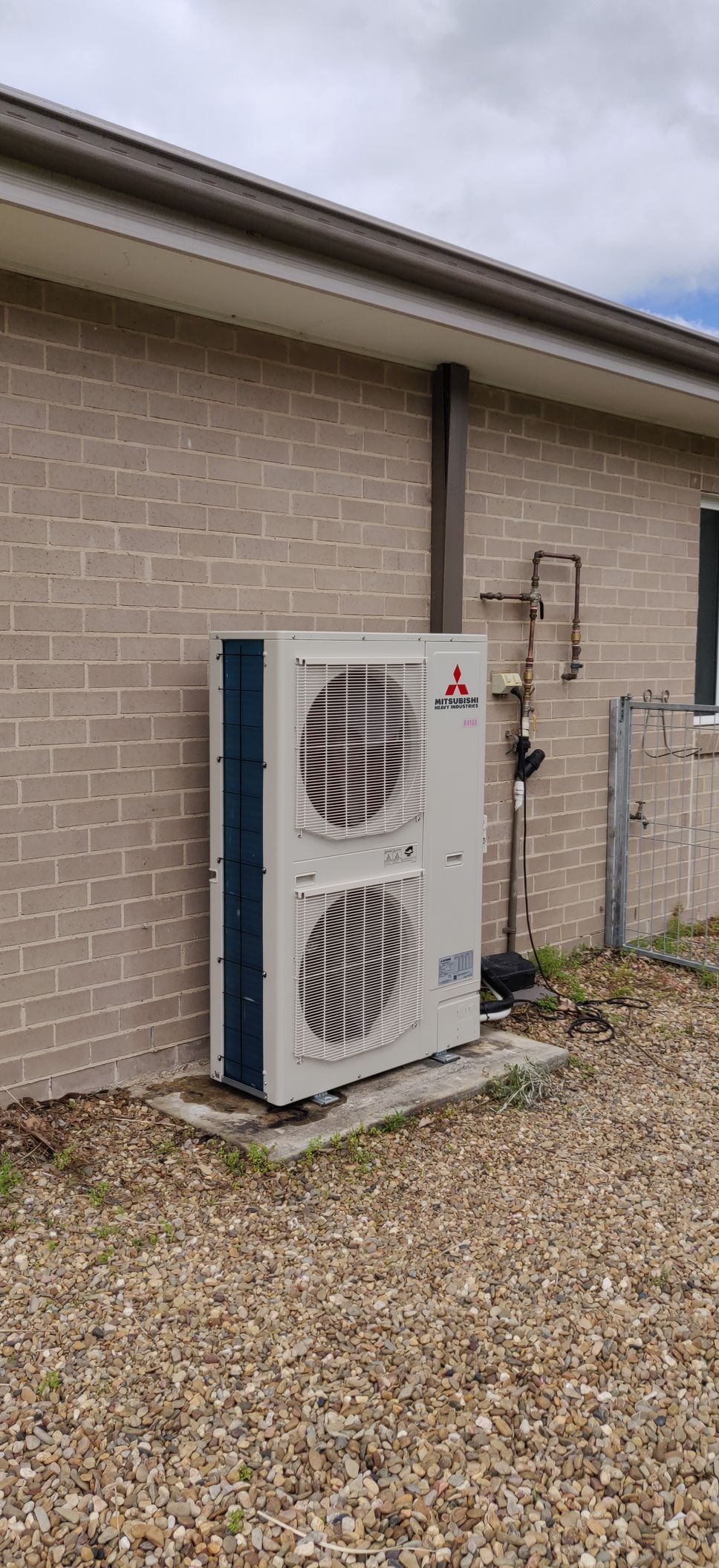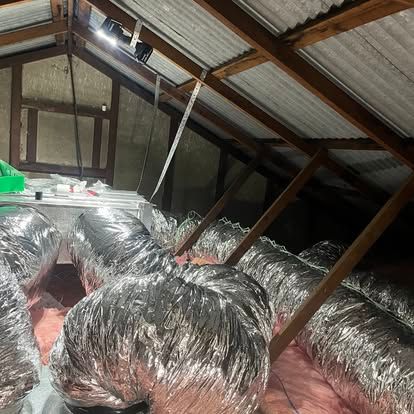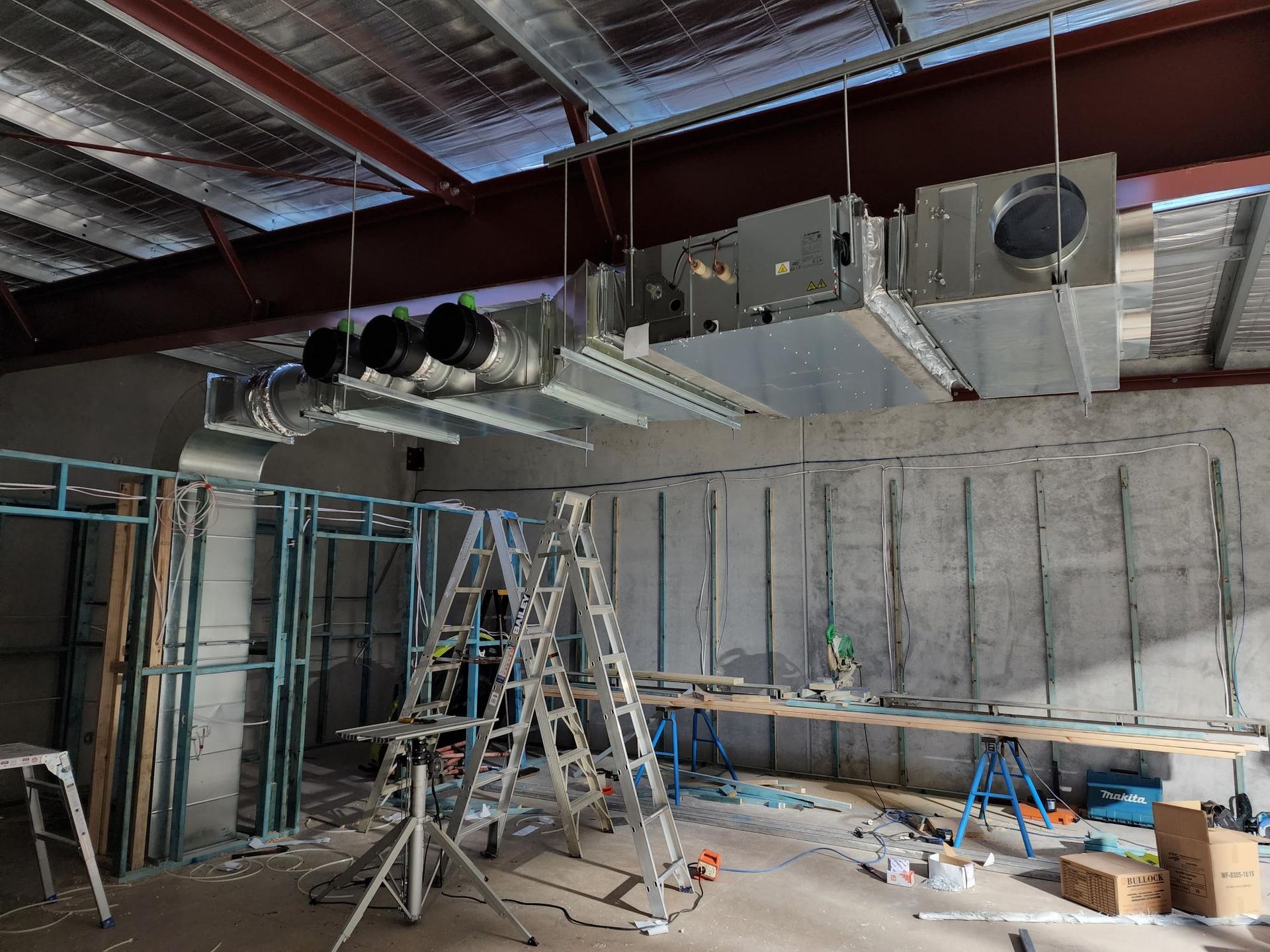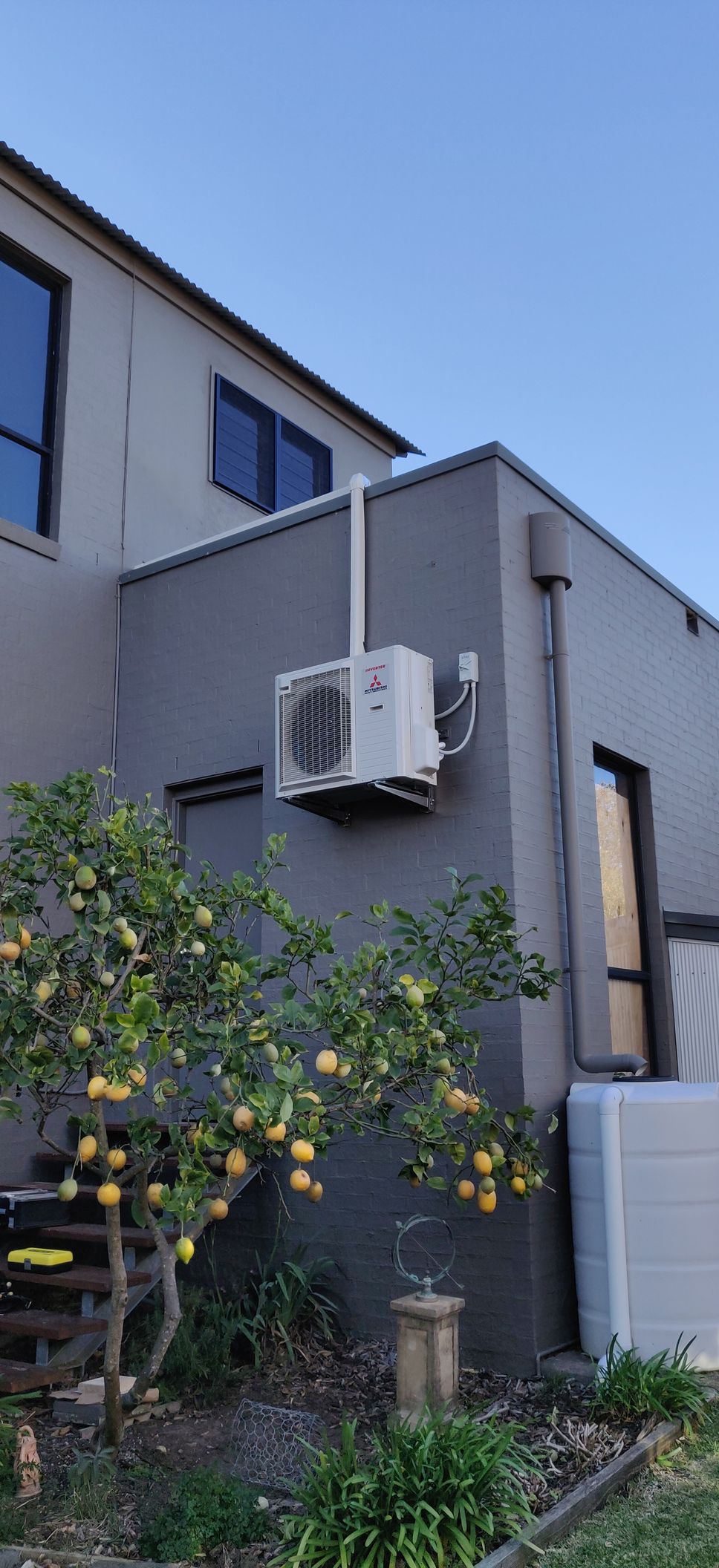Ducted Air Conditioning Nowra
Choose Us for our Expert Air Conditioning Services in Nowra
- 10+ Years of Experience
- Skilled & Certified Technicians
- Premium-Quality Air Conditioning Systems
- Tailored Solutions for Every Customer
- Reliable & Affordable Services
- Ongoing Maintenance & Support
Ducted Air Conditioning Nowra: Expert Installation & Service by Denali Air Conditioning
As the owner of Denali Air Conditioning, I’ve spent over a decade helping homeowners and businesses across Nowra and the Shoalhaven enjoy year-round comfort through expertly designed and installed ducted air conditioning systems.
Ducted air conditioning offers complete home climate control — quietly, efficiently, and with clean, modern aesthetics that blend into your home’s design. It’s the preferred solution for Nowra residents who value both comfort and energy efficiency.
If you’re considering ducted air conditioning in Nowra, this guide will walk you through how these systems work, what’s involved in installation, and how to keep your system performing at its best in our coastal climate.
Highly Rated Ducted Air Conditioning Installers in Nowra and the Shoalhaven
Looking for professional ducted air conditioning in Nowra? At Denali Air Conditioning, we design, install, and maintain custom ducted systems to keep your home or business comfortable year-round. With over 10 years of local experience, our licensed technicians provide expert advice, high-quality workmanship, and reliable aftercare. We work with leading brands like Daikin, Fujitsu, and Mitsubishi Heavy Industries to ensure energy-efficient climate control that’s built to last. Servicing Nowra, South Nowra, and the wider Shoalhaven, we’re your local air conditioning specialists.
Our Service Areas
At Denali Air Conditioning, I take pride in providing professional ducted air conditioning installation and servicing across Nowra and the entire Shoalhaven region.
Because we’re a locally owned and operated business, we understand how different building styles, microclimates, and coastal conditions affect air conditioning performance across the South Coast.
Whether you’re building a new home in Nowra, upgrading your existing system in Bomaderry, or maintaining a ducted setup near the Shoalhaven River, my team and I deliver reliable, energy-efficient comfort tailored to your property.
We proudly service:
- Nowra – including Nowra CBD, West Nowra, North Nowra, and South Nowra
- Bomaderry
- Berry
- Cambewarra & Cambewarra Village
- Bangalee
- Worrigee
- Callala Bay & Callala Beach
- Culburra Beach
- Greenwell Point
- Vincentia & Huskisson
- Sanctuary Point & St Georges Basin
- Basin View & Tomerong
- Ulladulla & Milton
- Sussex Inlet & Bendalong
If you’re located anywhere in the Shoalhaven or surrounding South Coast area and need ducted air conditioning installation, service, or repair, we’re happy to help. We also offer maintenance programs and emergency callouts for homeowners and businesses across the region.

Featured Case Study: Nowra Ducted System Upgrade (Residential)
See how we helped a Nowra family improve whole-home comfort and cut cooling costs by 40% with a modern ducted system designed for Shoalhaven conditions.

Why Ducted Air Conditioning Makes Sense in Nowra
Living in Nowra means dealing with humid summers, cool winters, and coastal salt air, all of which can be tough on air conditioning systems.
Ducted systems handle these conditions better than multiple wall-mounted units because they distribute cooled or heated air evenly throughout your home from a single, central unit.
Choosing a properly designed system isn’t just about comfort — it affects your energy bills, property value, and long-term reliability. When installed and maintained professionally, a ducted system can last 15–20 years or more while delivering quiet, efficient operation all year round.
How Ducted Air Conditioning Works
A ducted air conditioning system consists of a central indoor unit (usually in the roof space), an outdoor condenser, insulated ductwork, and discreet ceiling vents. This setup allows one system to heat or cool your entire home efficiently.
Unlike split systems that require multiple indoor units, ducted systems remain mostly hidden — only the vents and controller are visible. The result is a clean, uncluttered interior and consistent temperature in every room.
Because the system is centralised, it also offers superior humidity control, which is essential in Nowra’s coastal environment where moisture can cause mould or discomfort.
Ducted vs Split System: What’s Best for You
| Feature | Ducted System | Split System |
|---|---|---|
| Coverage | Whole home | Single rooms |
| Aesthetics | Hidden vents only | Wall-mounted units |
| Comfort | Even temperature | Uneven across rooms |
| Initial Cost | Higher upfront | Lower upfront |
| Energy Efficiency | High with zoning | Moderate |
While split systems are suitable for smaller homes or single rooms, ducted systems are the smarter long-term investment for full-home comfort, energy savings, and property value — especially for Nowra homes where humidity and salt air demand durable, efficient equipment.
Zoning: Smarter Energy Control
Modern ducted systems with zoning let you divide your home into areas such as living zones, bedrooms, and utility spaces — each with independent temperature control. This means you only heat or cool the spaces you’re using, reducing energy waste and improving comfort.
At
Denali Air Conditioning, we design zoning layouts around how your household actually lives — not just a generic floor plan. Zoning typically cuts energy use by up to 30%, making it one of the best upgrades you can include in your ducted installation.
Our Ducted Air Conditioning Installation Process in Nowra
1. Pre-Installation Assessment
We start with a detailed site inspection to assess:
- Roof space access and ceiling height
- Structural considerations like beams or plumbing
- Electrical capacity and outdoor unit placement
- Salt air exposure and ventilation
- BASIX and energy compliance requirements
This assessment ensures we design a system perfectly suited to your home’s layout and Nowra’s coastal environment.
2. BASIX and Building Code Compliance
All new installations and major renovations must meet BASIX energy efficiency standards. We handle all the required documentation, ensuring your installation complies with NSW regulations and manufacturer warranty conditions.
Our licensed electricians and qualified refrigeration technicians complete all electrical, mechanical, and structural components to the highest standard — giving you peace of mind that your system is compliant, efficient, and built to last.
3. Installation Timeline
Most installations for ducted air conditioning in Nowra are completed within one to two days.
Day one usually covers positioning the outdoor condenser and installing the indoor unit and main ductwork.
Day two involves completing connections, testing, and final commissioning.
We keep work areas clean, protect your interiors, and make sure you understand how to operate and maintain your new system before we leave.
Choosing the Right System for Your Property
Selecting the correct system size and type is crucial to achieving consistent comfort and energy efficiency. At Denali Air Conditioning, we tailor every system based on room-by-room load calculations, insulation quality, and building orientation.
Our Selection Process
- Heat Load Calculation – We measure each room’s cooling and heating demand using detailed climate data for Nowra.
- Equipment Choice – We recommend brands proven to perform in coastal areas such as Daikin, Mitsubishi Electric, and Fujitsu, with energy-efficient inverter technology and robust warranties.
- Zoning Design – We create a custom zone layout to maximise control and efficiency.
- Smart Controls – We integrate Wi-Fi control and programmable thermostats for convenience and energy savings.
Inverter vs Standard Ducted Systems
| Feature | Inverter System | Standard System |
|---|---|---|
| Energy Use | Adjusts output for efficiency | Fixed speed; higher consumption |
| Temperature Control | Maintains steady comfort | Fluctuates more noticeably |
| Noise Level | Quieter operation | Louder cycling sounds |
| Lifespan | Longer with less strain | Shorter due to constant load |
For Nowra’s long summers and humid conditions, inverter ducted systems are the clear winner — delivering smoother operation, lower running costs, and enhanced durability.
Maintaining Your Ducted Air Conditioning in Nowra
Even the best system needs regular care. Routine maintenance keeps your air conditioner efficient and prevents breakdowns, especially in coastal areas where salt corrosion can shorten equipment life.
At Denali Air Conditioning, we recommend annual maintenance that includes:
- Cleaning or replacing filters
- Inspecting and sealing ductwork
- Checking refrigerant levels
- Testing zone dampers and controls
- Sanitising coils to prevent mould and odours
If you notice uneven cooling, strange noises, or rising energy bills, it’s time to call for a professional service. Timely repairs save money and prevent small issues from becoming costly system failures.
Common Issues We Solve in Nowra Homes
After years of installing and servicing ducted systems across the South Coast, we’ve seen the same few issues come up repeatedly — and we know exactly how to fix them.
1. Uneven Temperature or Airflow
We rebalance your system, adjust zone dampers, and test airflow to ensure consistent comfort across all rooms.
2. High Power Bills
Our technicians perform duct leak tests, filter cleaning, and efficiency tuning to restore peak performance and reduce costs.
3. Duct Leaks in Older Homes
We seal and insulate older ductwork to stop air loss and
prevent unnecessary strain on your system.
Regular maintenance and upgrades like these keep your Nowra ducted air conditioning system running efficiently year-round.
Working with Local Experts You Can Trust
Choosing a local business matters — especially when it comes to ducted air conditioning in Nowra’s coastal environment.
At
Denali Air Conditioning, we’re not a franchise or call centre. We’re a locally owned company with technicians who live and work right here in the Shoalhaven.
That means we understand local homes, humidity, and compliance requirements — and we genuinely care about every installation we complete. From design to after-sales service, we provide clear communication, transparent pricing, and honest advice.
When you work with us, you’re dealing directly with the experts — no subcontracting, no upselling, and no shortcuts.
Ducted Air Conditioning Cost Guide Nowra
When homeowners in Nowra ask me how much a ducted air conditioning system costs, I always say it depends on the size of the home, layout, and energy efficiency goals. While every property is unique, this guide provides a realistic overview of typical costs, inclusions, and timeframes for ducted air conditioning installation in the Shoalhaven region.
Typical Cost Breakdown
| System Type | Typical Cost Range (inc. GST) | What’s Included | Average Timeframe |
|---|---|---|---|
| Single-Storey Home | $6,500 – $9,000+ | Full ducted system (up to 6 outlets), indoor & outdoor units, ductwork, controls, and commissioning | 1–2 days |
| Double-Storey or Large Home | $9,000 – $14,000+ | Zoned ducted system (8+ outlets), multi-zone controls, custom ductwork, full installation | 2–3 days |
| Ducted System Upgrade or Replacement | $5,000 – $9,500+ | Replacement of indoor/outdoor units, ductwork inspection, smart control upgrade | 1–2 days |
| Commercial Ducted Installation | $10,000 – $25,000+ | Custom system design, BASIX compliance, large-area zoning, multi-phase power setup | 2–4 days |
Factors That Affect Pricing
The total cost to install ducted air conditioning in Nowra depends on several key variables:
- Home Size & Layout – Larger or double-storey homes require more ductwork, outlets, and zoning controls.
- Roof Space Access – Limited access or flat roofs may need additional ducting or ceiling modifications.
- Energy Efficiency & Brand – Premium inverter systems from brands like Daikin, Mitsubishi, or Fujitsu cost more upfront but deliver long-term energy savings.
- Zoning Requirements – Adding multiple climate zones slightly increases upfront costs but significantly reduces running costs.
- Installation Complexity – Coastal conditions may require corrosion-resistant components or special outdoor placement.
At Denali Air Conditioning, every quote includes all materials, installation labour, electrical connections, commissioning, and compliance documentation — so you’ll never face hidden extras.
Request a Free Quote
If you’re ready to upgrade to ducted air conditioning in Nowra, we’d love to help design a system that fits your home, budget, and lifestyle.
Here’s how to get started:
- Book a property assessment – We’ll inspect your home and provide a tailored plan.
- Get a detailed written quote – Including equipment, zoning layout, BASIX compliance, and warranty coverage.
- Plan your installation – Schedule your installation at a time that suits you.
Contact Denali Air Conditioning today to arrange your free quote and discover why so many Nowra homeowners trust us for their ducted air solutions.

Ducted Air Conditioning FAQs for Nowra Homeowners

What are the benefits of ducted air conditioning in Nowra homes?
Ducted systems offer whole-home comfort with discreet ceiling vents and zone control. They're great for family homes in Nowra wanting consistent temperatures in every room.
How much does it cost to install ducted air conditioning in Nowra?
Ducted systems typically cost between $7,000 and $12,000 depending on the size of the home, number of zones, and the brand of system installed.
Can I control ducted air conditioning zones separately in Nowra?
Yes—most modern ducted systems come with zone control, allowing you to cool or heat different areas of your Nowra home independently and save on running costs.
How long does it take to install ducted air conditioning in Nowra?
Installation usually takes 2–4 days, depending on house layout and accessibility. Most Nowra providers will inspect the site beforehand and provide a full plan.
Is ducted air conditioning suitable for two-storey homes in Nowra?
Definitely. Ducted systems can be custom-designed to suit two-storey homes in Nowra, with separate zoning for upstairs and downstairs areas.
Featured Case Study: Sanctuary Point Ducted System Replacement
A Sanctuary Point family home received a full ducted system replacement, delivering stronger airflow, quieter operation and a 33% reduction in running costs.
Read Our Trusted Reviews From Real Customers
I'm a builder that uses Denali Air Conditioning in Nowra repeatedly. Marcus is very easy to work with and great at coming up with solutions. He is prompt and thorough. The team are polite and neat. It really makes things easy from a builders perspective.
Sarah Martinez
3 days ago

I would definitely recommend Marcus and his team. They were friendly, reliable and great to deal with. They cleaned up after themself and showed up when promised. Very happy with our air conditioning service in Nowra.
Emily Thompson
2 days ago

Marcus was awesome right from the start. He responded quickly and helped us to find the best air conditioning option for our home and budget in Nowra. Very happy with the outcome. Thanks Marcus.
Emily Thompson
2 days ago

I had an excellent experience with Denali Air Conditioning in Nowra! Marcus and his team were incredibly friendly, professional, and a pleasure to work with from start to finish. They took the time to explain everything thoroughly and ensured that the job was completed to a high standard. The quality of their work was exceptional, and they left everything clean and tidy. I highly recommend Denali Air Conditioning in Nowra for anyone looking for reliable and top-notch service.
Jason Miller
5 days ago

How Ducted Air Conditioning Systems Work
Ducted air conditioning systems work by drawing in warm or cool air from outside, filtering it and distributing it through a network of ducts connected to vents in each room. This allows you to control the temperature of each room or zone in your property, creating a comfortable and personalised environment. The outdoor unit contains the compressor and condenser, which cool or heat the air before it is distributed through the ducts.
At Denali Air Conditioning, we offer various zoning options for your ducted system to create different temperature settings for each room, allowing you to save energy and money by only cooling or heating the rooms you are using.

